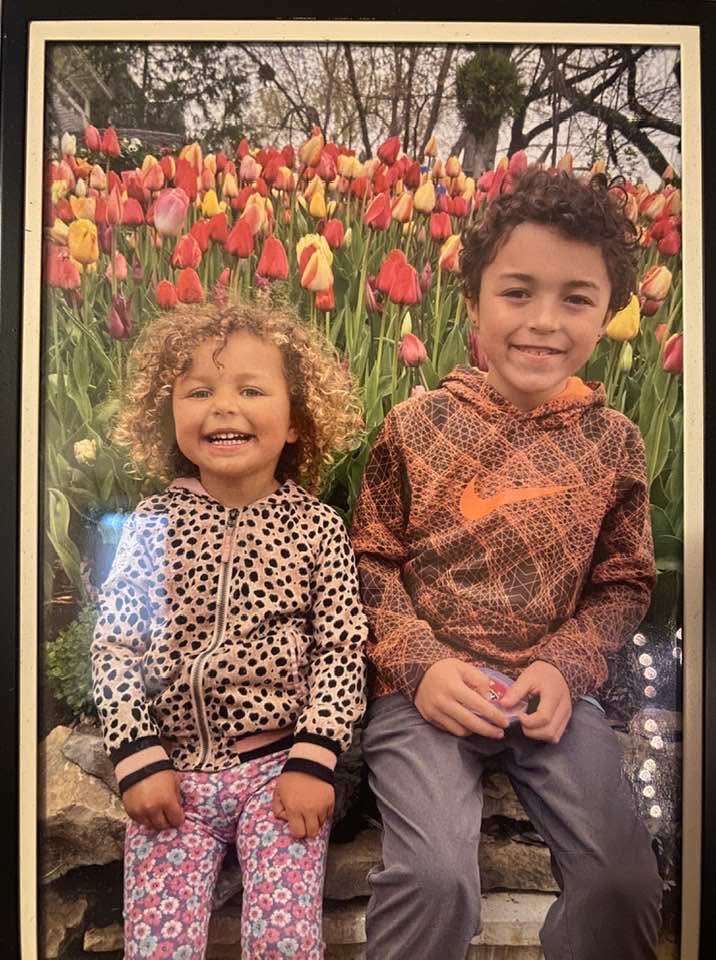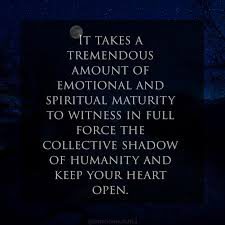Blog
The Hubble Space Telescope and the Cassini spacecraft monitored Saturn’s North Pole simultaneously during Cassini’s final orbits around the gas giant in September 2017. During this time, Saturn‘s tilt caused its North Pole to be clearly visible from Earth. The featured image is a composite of ultraviolet images of auroras and optical images of Saturn’s clouds and rings, all taken by Hubble. Like on Earth, Saturn’s northern auroras can make total or partial rings around the pole. Unlike on Earth, however, Saturn’s auroras are frequently spirals — and more likely to peak in brightness just before midnight and dawn. In contrast to Jupiter’s auroras, Saturn’s auroras appear better related to connecting Saturn’s internal magnetic field to the nearby, variable, solar wind. Saturn’s southern auroras were similarly imaged back in 2004 when the planet’s South Pole was clearly visible to Earth. 896 million miles distant.
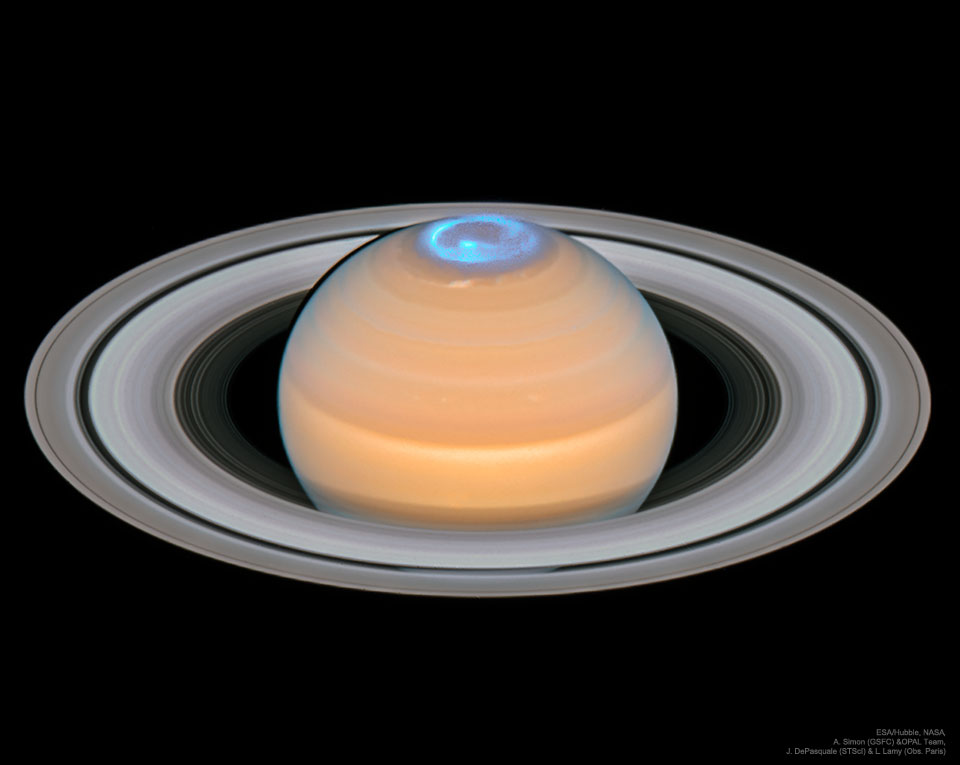
more...
Gregory LeNoir Allman (December 8, 1947 – May 27, 2017) was an American musician, singer and songwriter. He was known for performing in the Allman Brothers Band. Allman grew up with an interest in rhythm and blues music, and the Allman Brothers Band fused it with rock music, jazz, and country. He wrote several of the band’s most popular songs, including “Whipping Post“, “Melissa“, and “Midnight Rider“. Allman also had a successful solo career, releasing seven studio albums. He was born and spent much of his childhood in Nashville, Tennessee, before relocating to Daytona Beach, Florida and then Macon, Georgia.
He and his brother Duane Allman formed the Allman Brothers Band in 1969, which reached mainstream success with their 1971 live album At Fillmore East, but shortly thereafter, Duane was killed in a motorcycle crash. The band continued, and released Brothers and Sisters, which became their most successful album, in 1973. Allman began a solo career with Laid Back the same year. He gained some additional fame for his 1975 to 1978 marriage to pop star Cher. He had an unexpected late-career hit with his cover of the song “I’m No Angel” in 1987, and his seventh solo album, Low Country Blues (2011), saw the highest chart positions of his career. Throughout his life, Allman struggled with alcohol and substance use, which formed the basis of his memoir My Cross to Bear (2012). His final album, Southern Blood, was released posthumously on September 8, 2017.
Allman performed with a Hammond organ and guitar, and was recognized for his soulful voice. For his work in music, Allman was referred to as a Southern rock pioneer and received numerous awards, including one Grammy Award; he was inducted into the Rock and Roll Hall of Fame and the Georgia Music Hall of Fame. His distinctive voice placed him 70th in the Rolling Stone list of the “100 Greatest Singers of All Time”.
more...James Douglas Morrison (December 8, 1943 – July 3, 1971 Melbourne, FL) was an American singer, songwriter and poet who was the lead vocalist and primary lyricist of the rock band The Doors. Due to his energetic persona, poetic lyrics, distinctive voice, erratic and unpredictable performances, along with the dramatic circumstances surrounding him in his life and early death, Morrison is regarded by music critics and fans as one of the most influential frontmen in rock/music history. Since his death, his fame has endured as one of popular culture’s top rebellious and oft-displayed icons, representing the generation gap and youth counterculture.
Together with keyboardist Ray Manzarek, Morrison founded the Doors in 1965 in Venice, California. The group spent two years in obscurity until shooting to prominence with their number-one hit single in the United States, “Light My Fire“, taken from their self-titled debut album. Morrison recorded a total of six studio albums with the Doors, all of which sold well and many of which received critical acclaim. He frequently gave spoken word poetry passages while the band was playing live. Manzarek said Morrison “embodied hippie counterculture rebellion”.
Morrison developed an alcohol dependency, which at times affected his performances on stage. In 1971, Morrison died unexpectedly in a Paris apartment at the age of 27, amid several conflicting witness reports. Since no autopsy was performed, the cause of Morrison’s death remains disputed.
Although the Doors recorded two more albums after Jim Morrison died, his death greatly affected the band’s fortunes, and they split up two years later. In 1993, Morrison was inducted into the Rock and Roll Hall of Fame along with the other Doors members. Rolling Stone, NME, and Classic Rock have ranked him among the greatest rock singers of all time.
more...Frederick Nathaniel “Toots” Hibbert, OJ (8 December 1942 – 11 September 2020) was a Jamaican singer and songwriter who was the lead vocalist for the reggae and ska band Toots and the Maytals. A reggae pioneer, he performed for six decades and helped establish some of the fundamentals of reggae music. Hibbert’s 1968 song “Do the Reggay” is widely credited as the genesis of the genre name reggae. His band’s album True Love won a Grammy Award in 2005. Hibbert was born on 8 December 1942 in May Pen, Jamaica, the youngest of his siblings. Hibbert’s parents were both strict Seventh-day Adventist preachers so he grew up singing gospel music in a church choir. Both parents died young and, by the age of 11, Hibbert was an orphan who went to live with his brother John in the Trenchtown neighborhood of Kingston. While working at a local barbershop, he met his future bandmates Raleigh Gordon and Jerry Matthias.
Hibbert, a multi-instrumentalist, formed Toots and the Maytals in 1961. He could play every instrument used in his band and would later cite Otis Redding, Ray Charles, Wilson Pickett, and James Brown as key influences. According to Hibbert, Maytals is a reference to the Rastafari term for “do the right thing”. There are also statements attributing the source of the name to Hibbert’s hometown of May Pen. The band was originally a trio with Gordon and Mathias, and later added Jackie Jackson and Paul Douglas.
Much of Hibbert’s early recorded output, such as “Hallelujah” (1963), reflects his Christian upbringing. He was also known to write about Rastafarian religious themes, and in an early Maytals song, “Six And Seven Books of Moses” (1963), he addressed the folk magic of obeah and its use of the occult literature of Biblical grimoires, such as the Sixth and Seventh Books of Moses.
The Maytals became one of the more popular vocal groups in Jamaica in the mid-1960s, recording with producers Coxsone Dodd, Prince Buster, Byron Lee, Ronnie Nasralla, and Leslie Kong. This success included winning Jamaica’s National Popular Song Contest three times with songs Hibbert wrote: in 1966 with “Bam Bam”, which won a national song competition, 1969 with “Sweet and Dandy” and 1972 with “Pomps & Pride”.
more...James Oscar Smith (December 8, 1928 – February 8, 2005 Norristown, PA) was an American jazz musician who helped popularize the Hammond B-3 organ, creating a link between jazz and 1960s soul music.
In 2005, Smith was awarded the NEA Jazz Masters Award from the National Endowment for the Arts, the highest honor that America bestows upon jazz musicians. He purchased his first Hammond organ, rented a warehouse to practice in and emerged after little more than a year. Upon hearing him playing in a Philadelphia club, Blue Note‘s Alfred Lion immediately signed him to the label and his second album, The Champ, quickly established Smith as a new star on the jazz scene. He was a prolific recording artist and, as a leader, dubbed The Incredible Jimmy Smith, he recorded around forty sessions for Blue Note in just eight years beginning in 1956. Albums from this period include The Sermon!, House Party, Home Cooking’, Midnight Special, Back at the Chicken Shack and Prayer Meetin’.
more...Jean Sibelius (Finland Swedish; born Johan Julius Christian Sibelius; 8 December 1865 – 20 September 1957) was a Finnish composer of the late Romantic and early modernperiods. He is widely regarded as his country’s greatest composer, and his music is often credited with having helped Finland develop a stronger national identity when the country was struggling from several attempts at Russification in the late 19th century.
The core of his oeuvre is his set of seven symphonies, which, like his other major works, are regularly performed and recorded in Finland and countries around the world. His other best-known compositions are Finlandia, the Karelia Suite, Valse triste, the Violin Concerto, the choral symphony Kullervo, and The Swan of Tuonela (from the Lemminkäinen Suite). His other works include pieces inspired by nature, Nordic mythology, and the Finnish national epic, the Kalevala; over a hundred songs for voice and piano; incidental music for numerous plays; the one-act opera The Maiden in the Tower; chamber music, piano music, Masonic ritual music, and 21 publications of choral music.
Sibelius composed prolifically until the mid-1920s, but after completing his Seventh Symphony (1924), the incidental music for The Tempest (1926), and the tone poem Tapiola (1926), he stopped producing major works in his last 30 years—a retirement commonly referred to as the “silence of Järvenpää” (the location of his home). Although he is reputed to have stopped composing, he attempted to continue writing, including abortive efforts on an eighth symphony. In later life, he wrote Masonic music and re-edited some earlier works, while retaining an active but not always favourable interest in new developments in music. Although this ‘silence’ has often perplexed scholars, in reality, Sibelius was clear: he felt he had written enough.
The Finnish 100 mark note featured his image until 2002, when the euro was adopted. Since 2011, Finland has celebrated a flag flying day on 8 December, the composer’s birthday, also known as the Day of Finnish Music. In 2015, in celebration of the 150th anniversary of Sibelius’s birth, a number of special concerts and events were held, especially in Helsinki, the Finnish capital.
more...“After silence, that which comes nearest to expressing the inexpressible is music.” ~Aldous Huxley, Music at Night and Other Essays

A few songs from the performance left/demo at Episcopal Homes in St Paul on Wednesday 12-4-24
more...Attended SAVOR Friday 12-6-24, a Sephardic Music & Food Experience at Mt Zion yesterday morning hosted by Chef Susan Barocas and Ladino Singer Sarah Aroeste. Wonderful!

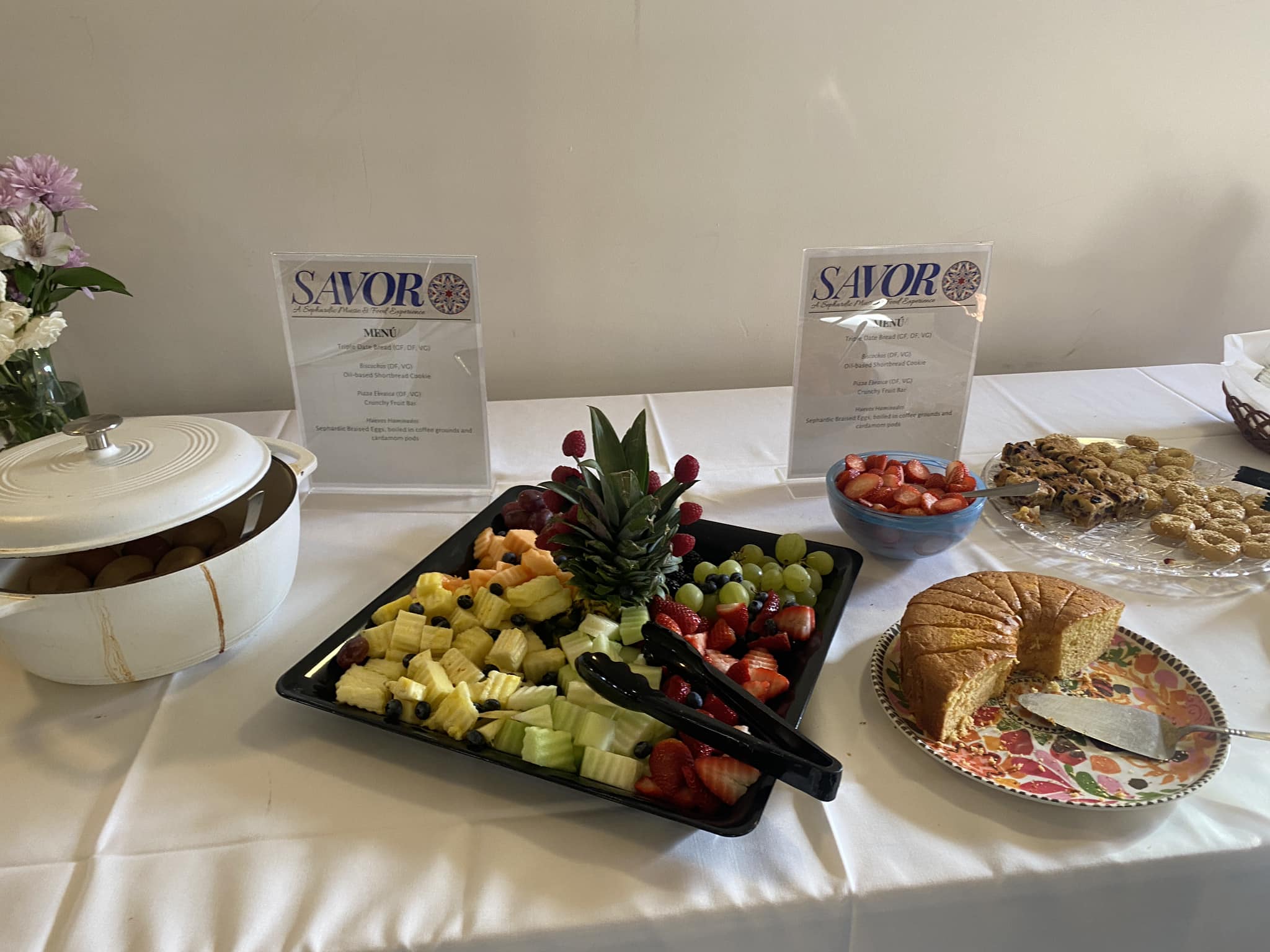
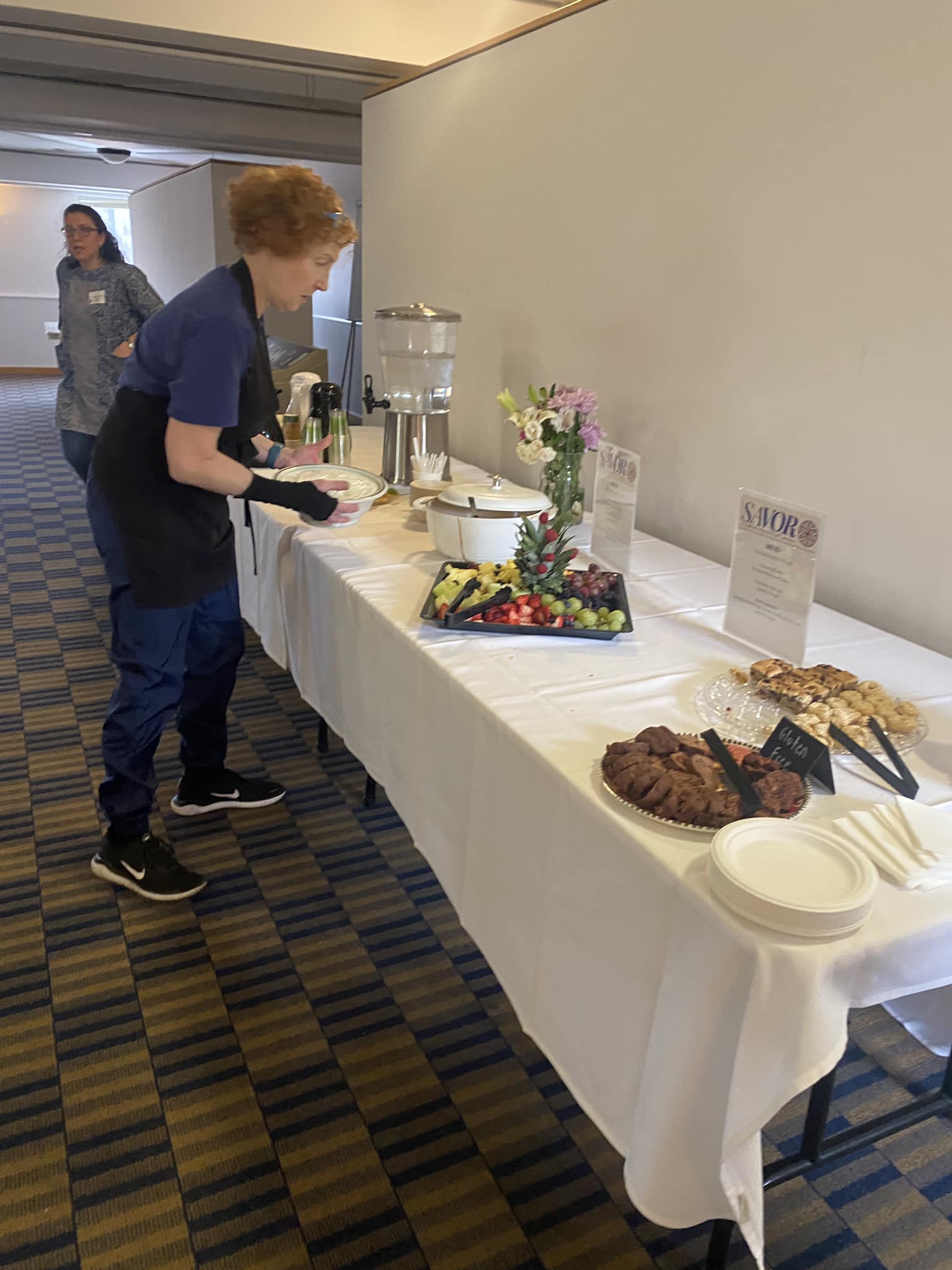
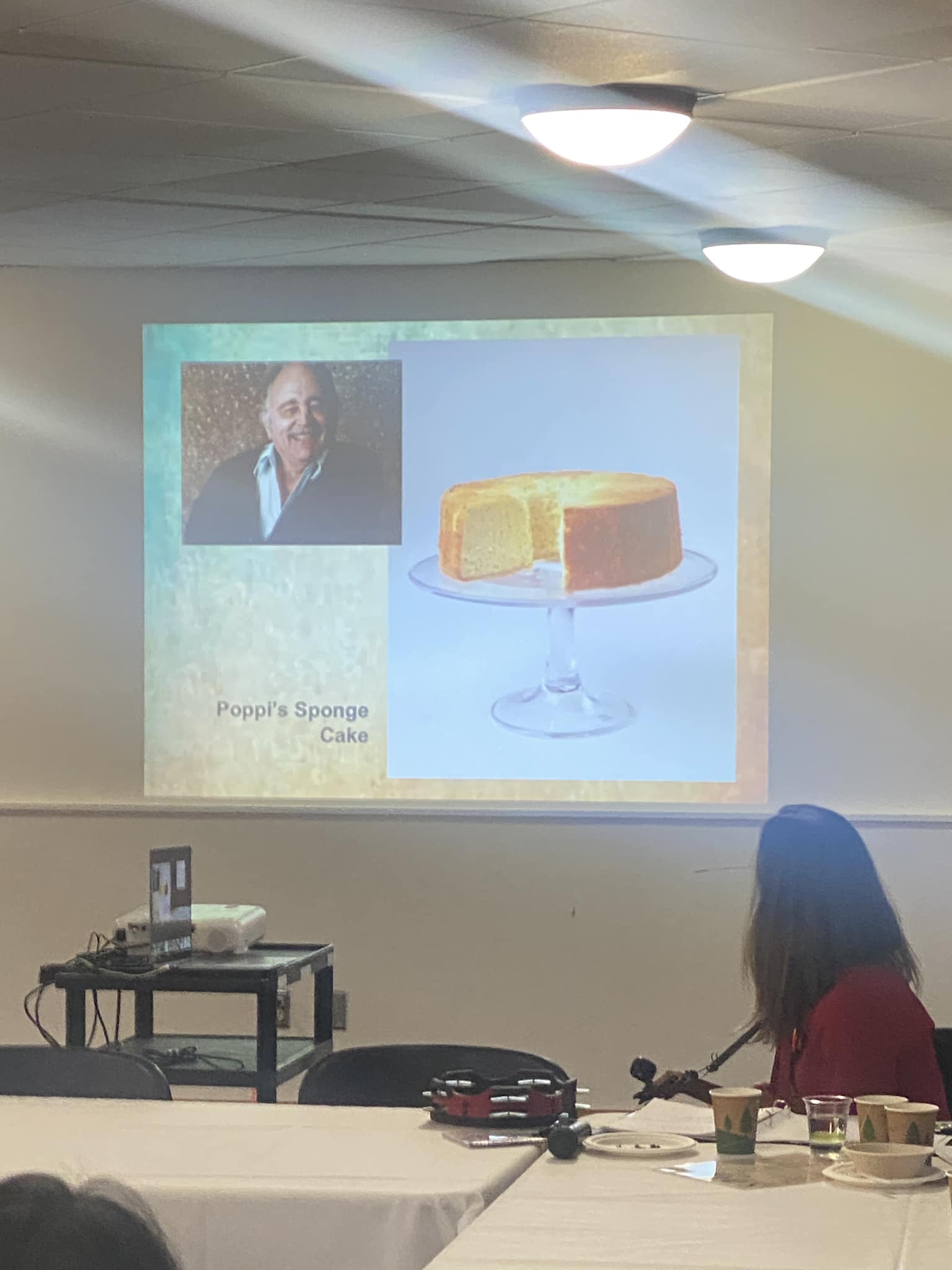
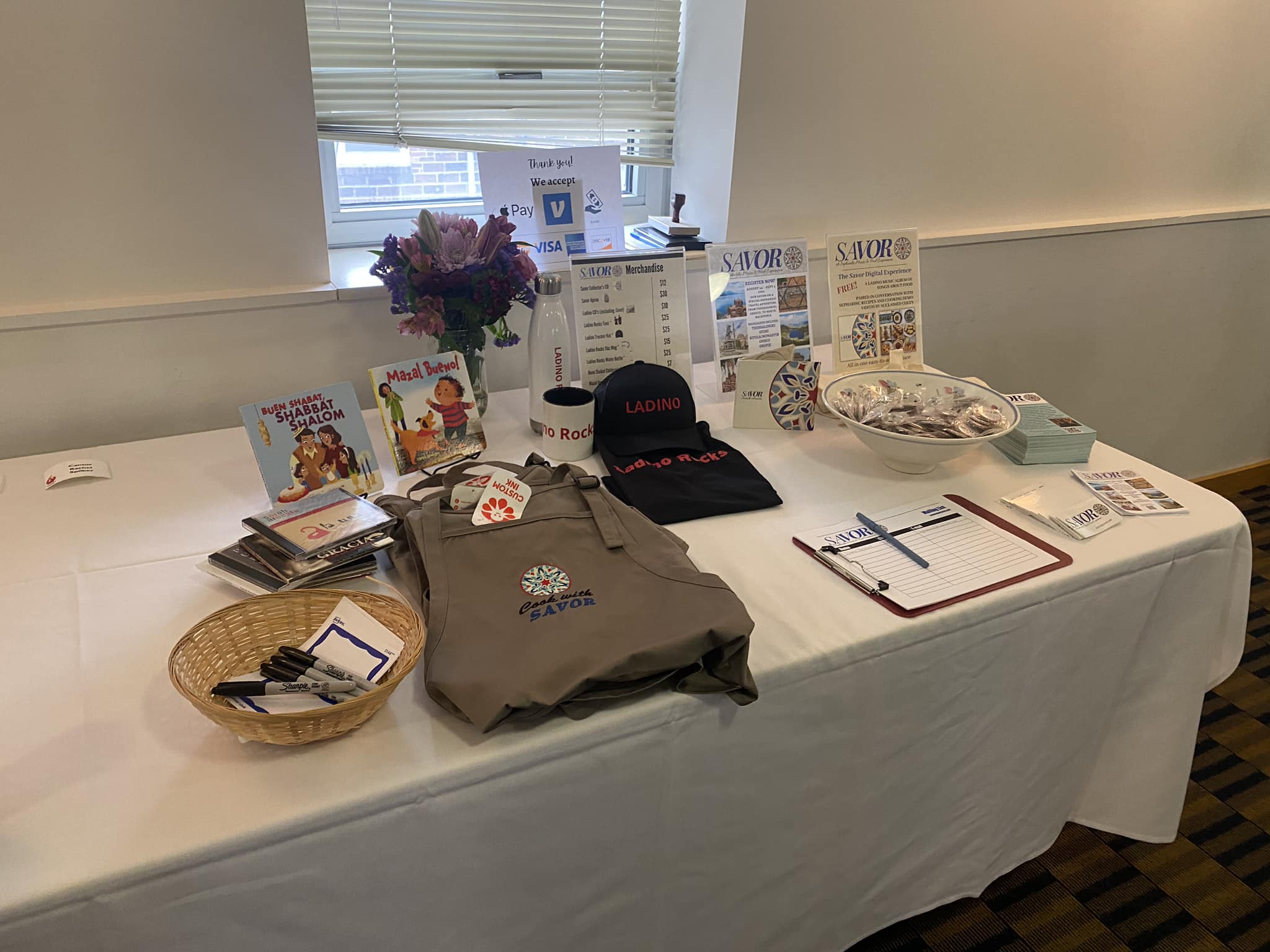
Blind John Davis (December 7, 1913 – October 12, 1985) was an American blues and boogie-woogiepianist and singer. He is best remembered for his recordings, including “A Little Every Day” and “Everybody’s Boogie”. Davis was born in Hattiesburg, Mississippi, and relocated with his family to Chicago at the age of two.Seven years later, he had lost his sight. In his early years Davis backed Merline Johnson, and by his mid-twenties he was a well-known and reliable accompanying pianist. Between 1937 and 1942, he recorded with Big Bill Broonzy, Sonny Boy Williamson I, Tampa Red, Red Nelson, Merline Johnson, and others. He also made several records of his own, singing in his lightweight voice.
Having played in various recording sessions with Lonnie Johnson, Davis teamed up with him in the 1940s. He recorded later on his own. His “No Mail Today” (1949) was a minor hit. Most of Doctor Clayton‘s later recordings featured Davis on piano.
He toured Europe with Broonzy in 1952, the first blues pianist to do so. In later years Davis toured and recorded frequently in Europe, where he enjoyed a higher profile than in the United States.
more...Called the Cone Nebula (in NGC 2264) – so named because in ground-based images it has a conical shape – this monstrous pillar resides in a turbulent star-forming region. This picture, taken by the newly installed Advanced Camera for Surveys (ACS) aboard the NASA/ESA Hubble Space Telescope, shows the upper 2.5 light-years of the Cone, a height that equals 23 million roundtrips to the Moon. The entire pillar is seven light-years long.
Radiation from hot, young stars (located beyond the top of the image) has slowly eroded the nebula over millions of years. Ultraviolet light heats the edges of the dark cloud, releasing gas into the relatively empty region of surrounding space. There, additional ultraviolet radiation causes the hydrogen gas to glow, which produces the red halo of light seen around the pillar. A similar process occurs on a much smaller scale to gas surrounding a single star, forming the bow-shaped arc seen near the upper left side of the Cone. This arc, seen previously with the Hubble telescope, is 65 times larger than the diameter of our Solar System. The blue-white light from surrounding stars is reflected by dust. Background stars can be seen peeking through the evaporating tendrils of gas, while the turbulent base is pockmarked with stars reddened by dust.
Over time, only the densest regions of the Cone will be left. But inside these regions, stars and planets may form. The Cone Nebula resides 2500 light-years away in the constellation Monoceros.
The Cone is a cousin of the M16 pillars, which the Hubble telescope imaged in 1995. Consisting mainly of cold gas, the pillars in both regions resist being eroded away by the blistering ultraviolet radiation from young, massive stars. Pillars like the Cone and M16 are common in large regions of star birth. Astronomers believe that these pillars may be incubators for developing stars.
The ACS made this observation on 2 April 2002. The colour image is constructed from three separate images taken in blue, near-infrared, and hydrogen-alpha filters.
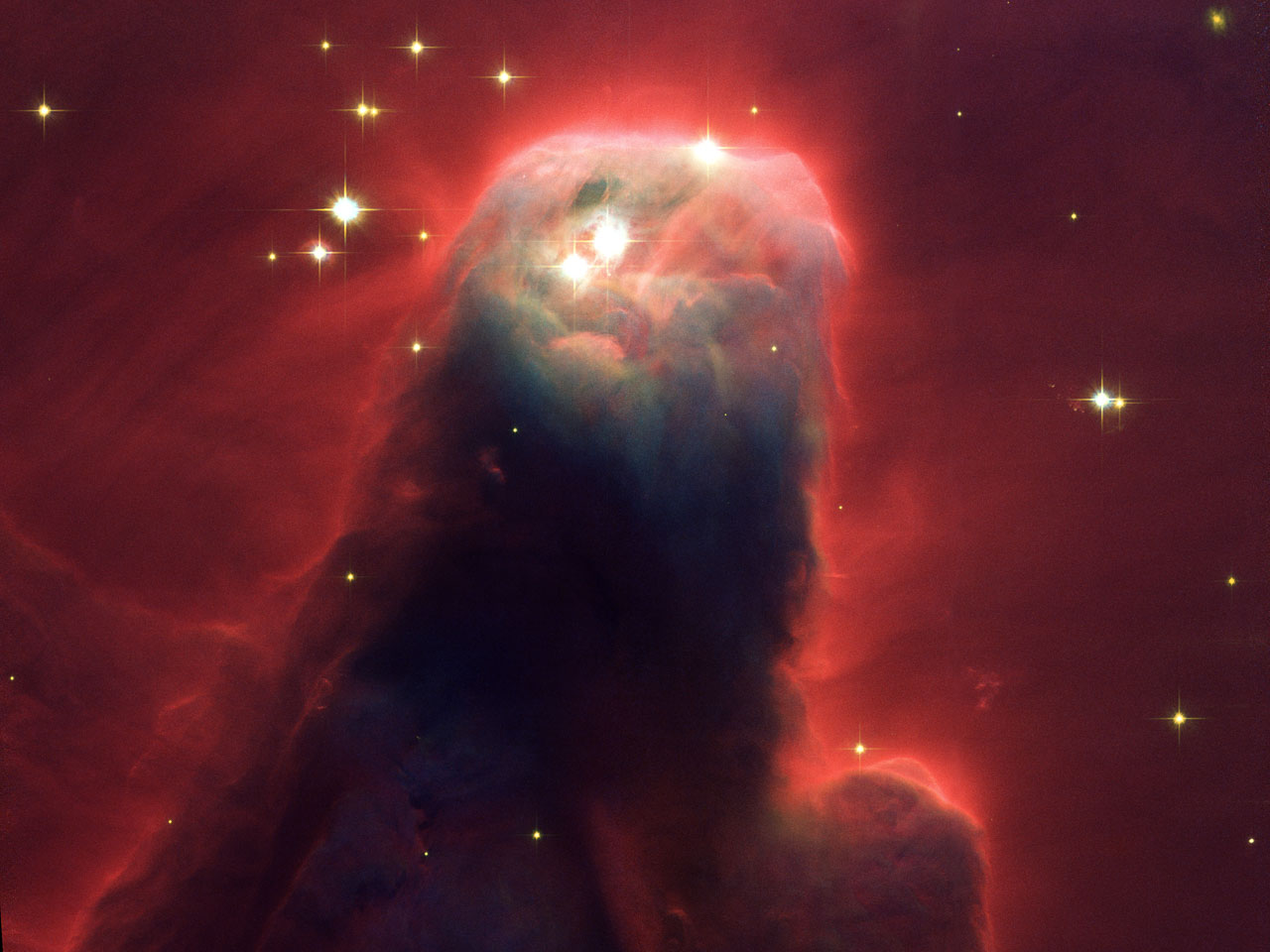
Thomas Alan Waits (born December 7, 1949) is an American musician, composer, songwriter, and actor. His lyrics often focus on society’s underworld and are delivered in his trademark deep, gravelly voice. He began in the folk scene during the 1970s, but his music since the 1980s has reflected the influence of such diverse genres as rock, Delta blues, opera, vaudeville, cabaret, funk, hip hop and experimental techniques verging on industrial music. Per The Wall Street Journal, Waits “has composed a body of work that’s at least comparable to any songwriter’s in pop today. A keen, sensitive and sympathetic chronicler of the adrift and downtrodden, Mr. Waits creates three-dimensional characters who, even in their confusion and despair, are capable of insight and startling points of view. Their stories are accompanied by music that’s unlike any other in pop history.”
Tom Waits was born and raised in a middle-class family in Pomona, California. Inspired by the work of Bob Dylan and the Beat Generation, he began singing on the San Diego folk circuit. He relocated to Los Angeles in 1972, where he worked as a songwriter before signing a recording contract with Asylum Records. His first albums were the jazzy Closing Time (1973), The Heart of Saturday Night (1974) and Nighthawks at the Diner (1975), which reflected his lyrical interest in poverty, criminality and nightlife. He repeatedly toured the United States, Europe and Japan, and found greater critical and commercial success with Small Change (1976), Blue Valentine (1978) and Heartattack and Vine (1980). During this period, Waits entered the world of film, acting in Paradise Alley (1978), where he met a young story editor named Kathleen Brennan. He composed the soundtrack for Francis Ford Coppola‘s One from the Heart (1982) and made cameos in several subsequent Coppola films.
In 1980, Waits married Brennan, split from his manager and record label, and moved to New York City. With Brennan’s encouragement and frequent collaboration, he pursued a more eclectic and experimental sound influenced by Harry Partch and Captain Beefheart, as heard on the loose trilogy Swordfishtrombones (1983), Rain Dogs (1985) and Franks Wild Years (1987). Waits starred in Jim Jarmusch‘s Down by Law (1986), lent his voice to his Mystery Train (1989), composed the soundtrack for his Night on Earth (1991) and appeared in his Coffee and Cigarettes (2003). He collaborated with Robert Wilson and William S. Burroughs on the “cowboy opera” The Black Rider (1990), the songs for which were released on the album The Black Rider. Waits and Wilson collaborated again on Alice (2002) and Woyzeck(2000). Bone Machine (1992) and Mule Variations (1999) won Grammys for Best Alternative Music Albumand Best Contemporary Folk Album, respectively. In 2002, the songs from Alice and Wozzeck were recorded and released on the albums Alice and Blood Money. Waits went on to release Real Gone (2004), the compilation Orphans: Brawlers, Bawlers & Bastards (2006), the live album Glitter and Doom Live (2009) and Bad as Me (2011).
Waits has influenced many artists and gained an international cult following. His songs have been covered by Bruce Springsteen, Tori Amos, Rod Stewart and the Ramones and he has written songs for Johnny Cash and Norah Jones, among others. In 2011, he was inducted into the Rock and Roll Hall of Fame. Introducing him, Neil Young said: “This next man is indescribable, and I’m here to describe him. He’s sort of a performer, singer, actor, magician, spirit guide, changeling… I think it’s great that the Rock and Roll Hall of Fame has recognized this immense talent. Could have been the Motion Picture Hall of Fame, could have been the Blues Hall of Fame, could have been the Performance Artist Hall of Fame, but it was the Rock and Roll Hall of Fame that recognized the great Tom Waits.” In accepting the award, Waits mused, “They say that I have no hits and that I’m difficult to work with. And they say that like it’s a bad thing!”
more...Mads Vinding (born 7 December 1948, Copenhagen, Denmark) is a Danish jazz double-bassist.
Vinding began his professional career when he was 16 as the house bassist for Jazzhus Montmartre, a jazz club in Copenhagen. He has played on more than 800 recordings and more than 1000 Radio/TV shows.
more...Louis Leo Prima (December 7, 1910 – August 24, 1978 NOLA) was an American trumpeter, singer, entertainer, and bandleader. While rooted in New Orleans jazz, swing music, and jump blues, Prima touched on various genres throughout his career: he formed a seven-piece New Orleans–style jazz band in the late 1920s, fronted a swing combo in the 1930s and a big band group in the 1940s, helped to popularize jump blues in the late 1940s and early to mid 1950s, and performed frequently as a Vegaslounge act beginning in the 1950s.
From the 1940s through the 1960s, his music further encompassed early R&B and rock ‘n’ roll, boogie-woogie, and Italian folk music, such as the tarantella. Prima made prominent use of Italian music and language in his songs, blending elements of his Italian and Sicilian identity with jazz and swing music. At a time when ethnic musicians were discouraged from openly stressing their ethnicity, Prima’s conspicuous embrace of his Sicilian ethnicity opened the doors for other Italian-American and ethnic American musicians to display their ethnic roots.
Prima is also known for providing the voice for the orangutan King Louie in the 1967 Disney film The Jungle Book.
more...More Posts
- World Music Momi Maiga
- Daily Roots Mighty Diamonds
- Baby Washington
- Charlie Chaplin Loneliness
- Cosmos NGC 6888
- Bill Gibson
- John Paul Hammond
- Tabu Ley Rochereau
- Idris Muhammad
- Hampton Hawes
- World Music Banning Eyre
- Daily Roots Brigadier Jerry
- Roy Haynes Memorial
- Cosmos IC 3225
- Baaba Maal
- Neil Young
- Sam Jones
- Bukka White
- World Music Orch. Lipua-Lipua & Orch. Les Kamale
- Daily Roots The Prophets
